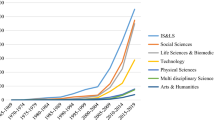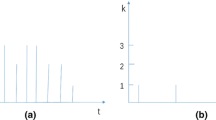Summary
The present paper addresses the objective of developing forward indicators of research performance using bibliometric information on the UK science base. Most research indicators rely primarily on historical time series relating to inputs to, activity within and outputs from the research system. Policy makers wish to be able to monitor changing research profiles in a more timely fashion, the better to determine where new investment is having the greatest effect. Initial (e.g. 12 months from publication) citation counts might be useful as a forward indicator of the long-term (e.g. 10 years from publication) quality of research publications, but - although there is literature on citation-time functions - no study to evaluate this specifically has been carried out by Thomson ISI or any other analysts. Here, I describe the outcomes of a preliminary study to explore these citation relationships, drawing on the UK National Citation Report held by Evidence Ltd under licence from Thomson ISI for OST policy use. Annual citation counts typically peak at around the third year after publication. I show that there is a statistically highly significant correlation between initial (years 1-2) and later (years 3-10) citations in six research categories across the life and physical sciences. The relationship holds over a wide range of initial citation counts. Papers that attract more than a definable but field dependent threshold of citations in the initial period after publication are usually among the top 1% (the most highly cited papers) for their field and year. Some papers may take off slowly but can later join the high impact group. It is important to recognise that the statistical relationship is applicable to groups of publications. The citation profiles of individual articles may be quite different. Nonetheless, it seems reasonable to conclude that leading indicators of research excellence could be developed. This initial study should now be extended across a wider range fields to test the initial outcomes: earlier papers suggest the model holds in economics. Additional statistical tests should be applied to explore and model the relationship between initial, later and total citation counts and thus to create a general tool for policy application.
Similar content being viewed by others
Author information
Authors and Affiliations
Rights and permissions
About this article
Cite this article
Adams, J. Early citation counts correlate with accumulated impact. Scientometrics 63, 567–581 (2005). https://doi.org/10.1007/s11192-005-0228-9
Issue Date:
DOI: https://doi.org/10.1007/s11192-005-0228-9




